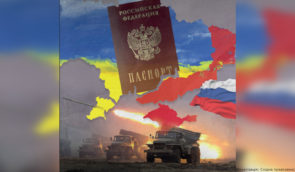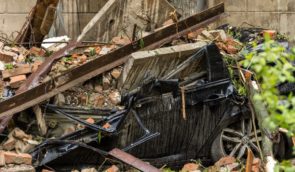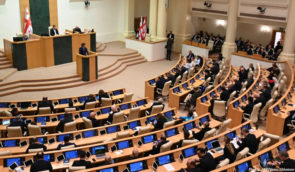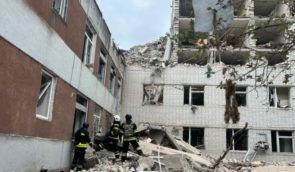UN describes new incidents of detention and torture by illegal armed groups in eastern Ukraine
OHCHR has recorded new reports on killings, abductions, arbitrary detentions, torture and ill-treatment perpetrated by members of the illegal armed groups in eastern Ukraine.
Such conclusions are outlined in the 14th report on human rights situation in Ukraine, covering the period from 16 February to 15 May 2016.

They note that mostly referred to incidents that took place outside the reporting period. Some victims delayed reporting until they left the areas under the control of the armed groups. In other cases, the relatives of those deprived of their liberty or otherwise abused by the armed groups requested that their cases remain confidential for fear of retribution.
Despite repeated requests to the ‘authorities’ of the ‘Donetsk people’s republic’ and ‘Luhansk people’s republic’ to grant OHCHR access to places of deprivation of liberty on the territories they control, such access was not provided.
OHCHR cites an incident with a man, who was detained on 16 July 2014 at the ‘Staryi Most’ checkpoint, in the town of Stanychno Luhanske (Luhansk region). On 17 July, the mother of the captive received a phone call from a man who informed her he had been kept with her son in a house located approximately a 10 minute drive from the ‘Staryi Most’ checkpoint. The whereabouts of the man remains unknown.
The report also tells that a serviceman of the Ukrainian Armed Forces was captured on 10 August 2015 by four members of the so-called ‘Vostok’ battalion of the ‘Donetsk people’s republic’, near the village of Verkhnioteretske (Donetsk region). They put a plastic bag on his head, handcuffed him, and drove him to a private house. He was then tied to a tree with wristbands, severely beaten, threatened, and tortured with electrical shocks at 220 volts. He lost consciousness on several occasions.
After three hours of torture inflicted by some 10 men wearing masks and camouflage with the insignia of the ‘Donetsk people’s republic’, he was interrogated. No medical aid was provided to him. He was then transferred to a military base in the centre of Makiivka. He was transferred to Government territory as part of a simultaneous release of detainees on 20 February 2016
OHCHR documented a number of cases when people were deprived of their liberty by armed groups while crossing the contact line.
For instance, on 14 February 2016, while crossing the contact line in Stanychno Luhanske, a man was deprived of his liberty at a check point of the ‘Luhansk people’s republic’. As of 12 May, his relatives were not informed about reasons of his deprivation of liberty, and the place where he is kept.
In addition, the whereabouts of a man, who went missing on 5 March 2016, while travelling to Donetsk through the Zaitseve/Maiorsk checkpoints, remain unknown. According to OHCHR report, the man was deprived of his liberty at the checkpoint of the ‘Donetsk people’s republic’ and would have been transferred to the department of the ‘ministry of state security’ in the city of Makiivka. Before the conflict, the man was working in the Donetsk State University of Management. He was known for his strong pro-Ukrainian views, which he expressed at the beginning of 2014. He moved to Kyiv in 2014 as the security situation was deteriorating.








